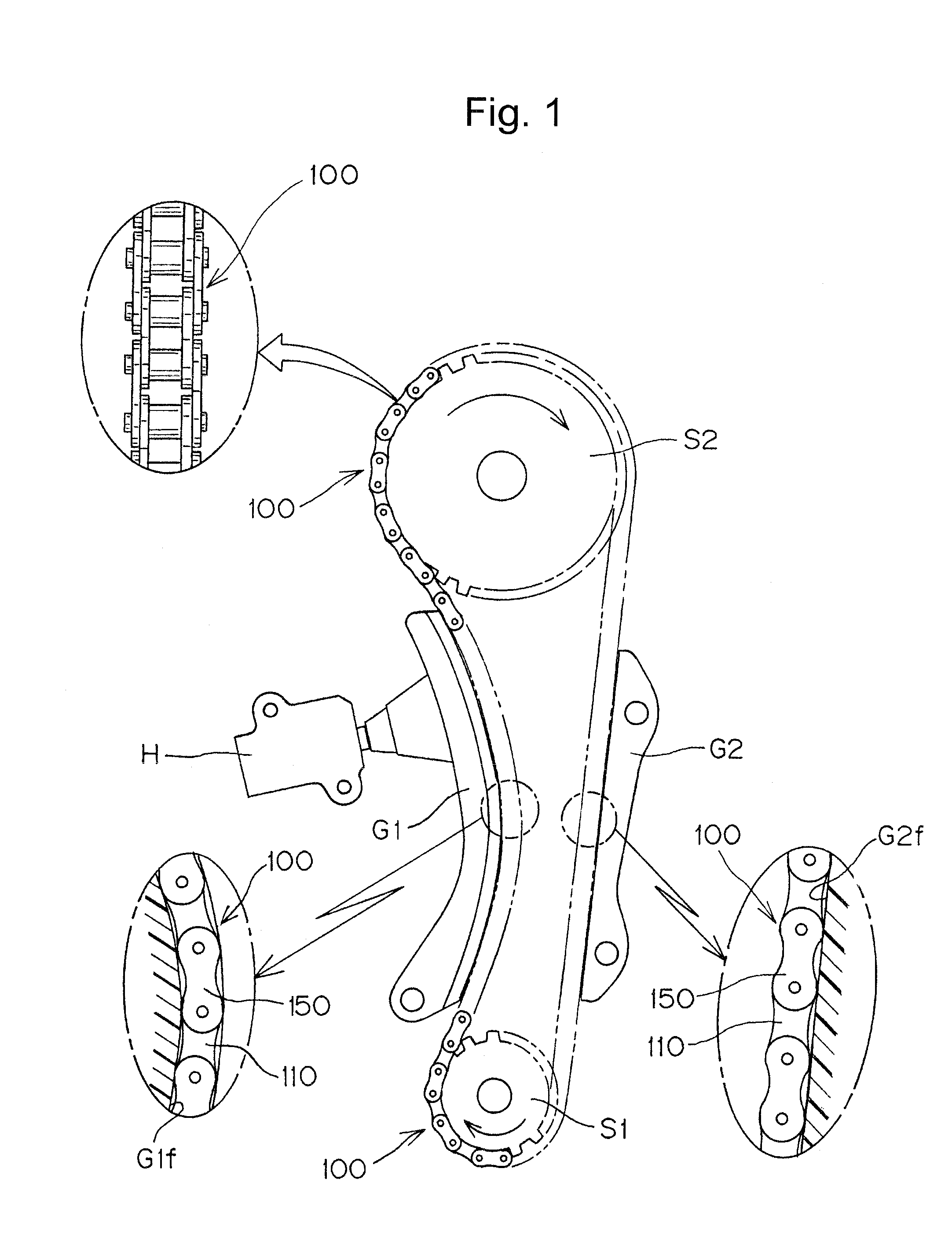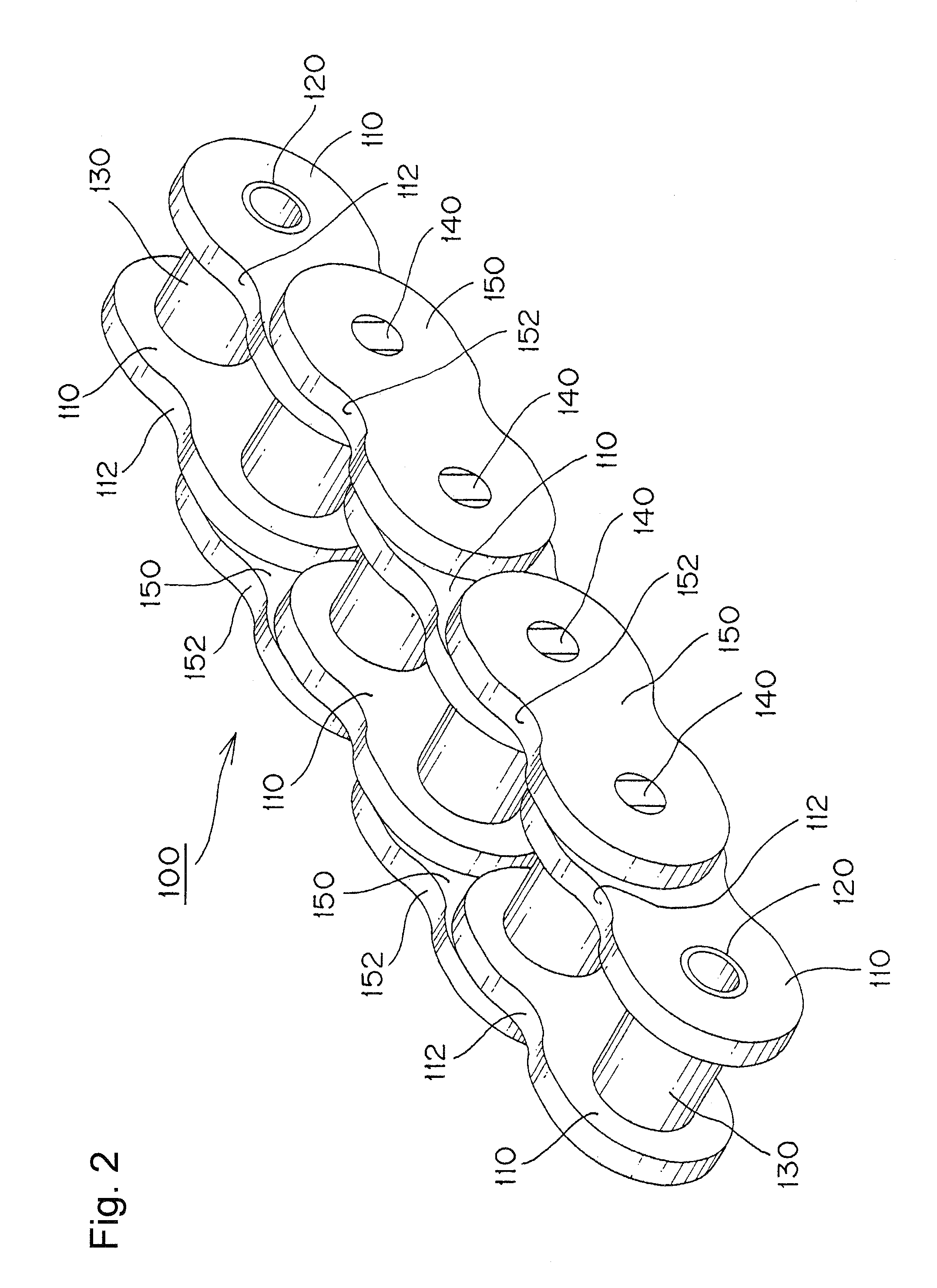Transmission chain for use in engine
a technology of transmission chain and transmission shaft, which is applied in the direction of driving chain, chain elements, gearing, etc., can solve the problems of unstable chain path, failure of link plate, and slack generation in the chain, and achieve the effect of stable oil film, significant improvement of chain endurance, and reduction of friction between the chain and the chain guid
- Summary
- Abstract
- Description
- Claims
- Application Information
AI Technical Summary
Benefits of technology
Problems solved by technology
Method used
Image
Examples
Embodiment Construction
[0030]When the guide-engaging portion of each plate comprises spaced front and rear flat surfaces and front and rear convex curved surfaces, each continuous with one of the flat surfaces, the convex curved surfaces are disposed between the flat surfaces, and a concave surface extends from one of the convex curved surfaces to the other for forming a lubricating oil-retaining clearance, and the distance between the boundaries between the flat and convex surfaces of each plate is shorter than the chain pitch, sinking of the chain toward a convex guide surface of the chain guide is reduced, and the chain path is stabilized. At the same time, the strength of the portions of the plates where stress is liable to be concentrated and fatigue failure is likely to occur is improved, and lubricating oil is more reliably retained between the chain guide and the plate so that superior endurance can be realized.
[0031]The invention can be embodied in various kinds of transmission chains, including ...
PUM
 Login to View More
Login to View More Abstract
Description
Claims
Application Information
 Login to View More
Login to View More - R&D
- Intellectual Property
- Life Sciences
- Materials
- Tech Scout
- Unparalleled Data Quality
- Higher Quality Content
- 60% Fewer Hallucinations
Browse by: Latest US Patents, China's latest patents, Technical Efficacy Thesaurus, Application Domain, Technology Topic, Popular Technical Reports.
© 2025 PatSnap. All rights reserved.Legal|Privacy policy|Modern Slavery Act Transparency Statement|Sitemap|About US| Contact US: help@patsnap.com



